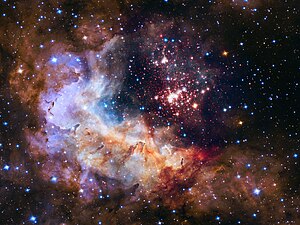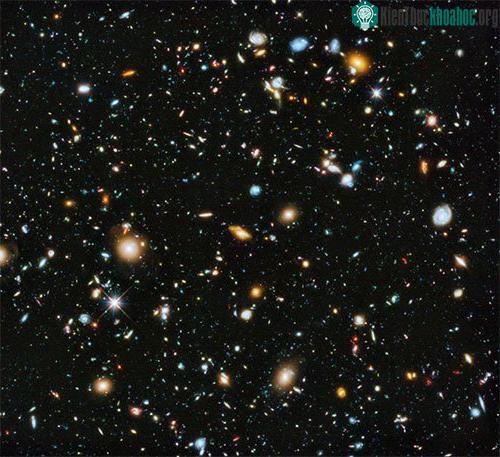Astrophysicists from SLAC National Accelerator Laboratory and Stanford University have measured the X-ray emission from galaxy clusters, which revealed the distribution of matter within them. In turn, the data helped the scientists test the Lambda-CDM model — the prevailing theory of the structure and evolution of the Universe.

This artist’s impression shows the evolution of the Universe beginning with the Big Bang on the left followed by the appearance of the Cosmic Microwave Background. The formation of the first stars ends the cosmic dark ages, followed by the formation of galaxies. Image credit: M. Weiss / Harvard-Smithsonian Center for Astrophysics.
Inferring the mass distributions of galaxy clusters from their X-ray emission is most reliable when the energy in the gas within clusters is balanced by the pull of gravity, which holds the whole system together.

Measurements of the mass distributions in real clusters therefore focus on those that have settled down to a relaxed state.
When comparing to theoretical predictions, it is therefore essential to take this selection of relaxed clusters into account.
Keeping this in mind, Stanford University physicist Elise Darragh-Ford and her colleagues examined computer-simulated clusters produced by the Three Hundred Project.

First, the researchers computed what the X-ray emission for each simulated cluster should look like.
Then, they applied the same observational criteria used to identify relaxed galaxy clusters from real data to the simulated images to winnow the set down.
The researchers next measured the relationships between three properties — the cluster mass, how centrally concentrated this mass is, and the redshift of the clusters, which reflects how old the Universe was when the light we observe was emitted — for both the simulated Three Hundred Project clusters and 44 real clusters observed with NASA’s Chandra X-ray Observatory.
They found consistent results from both data sets: overall, clusters have become more centrally concentrated over time, while at any given time, less massive clusters are more centrally concentrated than more massive ones.

“The measured relationships agree extremely well between observation and theory, providing strong support for the Lambda-CDM paradigm,” Darragh-Ford said.
“In the future, we hope to be able to expand the size of both the observed and simulated galaxy cluster data sets in their analysis.”
The work was published in the Monthly Notices of the Royal Astronomical Society.
Source: SCI News







